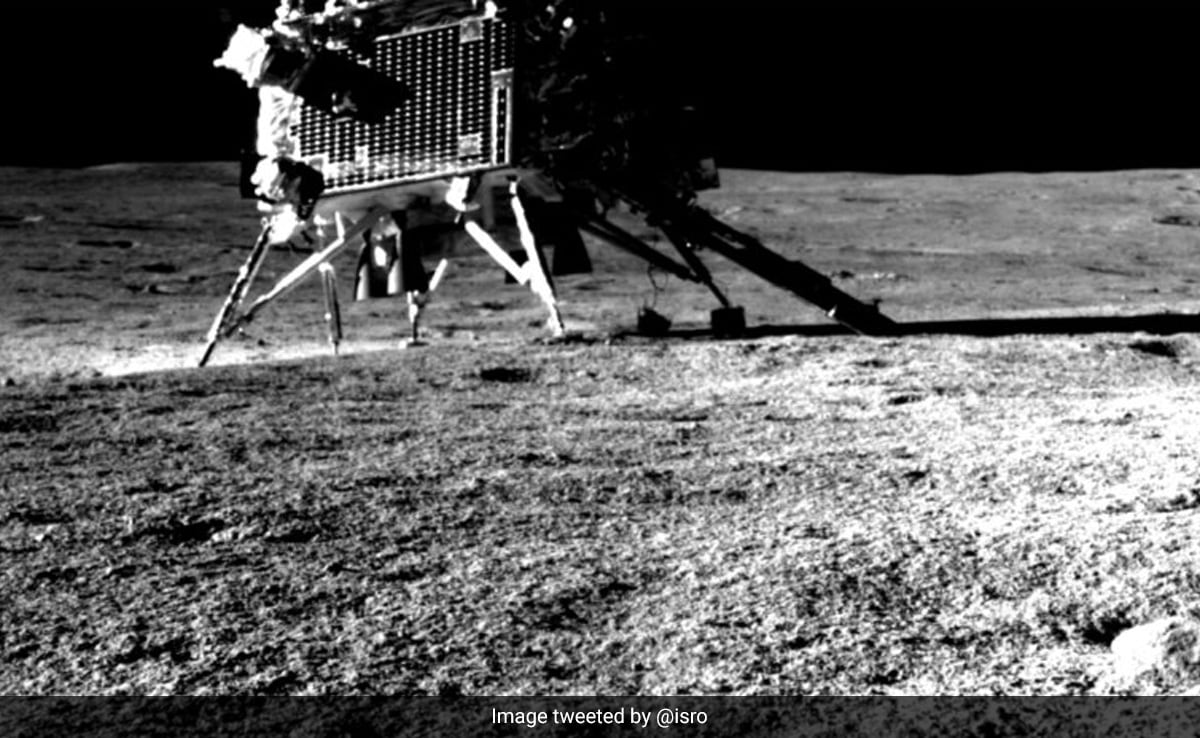
Chandrayaan-3’s lander was put into sleep mode on September 4 around 8 am.
The Indian Space Research Organisation (ISRO) will try to wake up Chandrayaan-3 mission’s Vikram lander and Pragyan rover, which were put into sleep mode earlier this month, so that they can continue with their scientific experiments. The space agency had stated that it would try to re-establish communication with both devices on September 22 after more than two-week-long lunar night.
Sleep Mode Of Vikram, Pragya Rover
Days after successfully touching down on the lunar surface, Chandrayaan-3’s lander was put into sleep mode on September 4 around 8 am. Its payloads were deactivated, however, its receivers remained operational. “In-situ experiments by ChaSTE, RAMBHA-LP and ILSA payloads are performed at the new location. The data collected is received at the Earth, ISRO said while announcing the activation of sleep mode of the lander. Before this, the agency had activated the sleep mode of Pragyan Rover on September 2. It was stated that the battery was fully charged, the receiver was kept on and the solar panel was oriented to receive the light at the next sunrise expected on September 22.
“Vikram will fall asleep next to Pragyan once the solar power is depleted and the battery is drained. Hoping for their awakening, around September 22, 2023,” ISRO said on September 4.
Chandrayaan 3’s Hop Mission
The Vikram lander made a touchdown on the lunar surface for a second time on September 4 and “exceeded Chandrayaan-3 mission objectives”. It completed a “hop experiment“, in which the lander fired its engines on command and elevated 40 centimetres above the ground, as the agency expected, and then landed back safely at a distance of 30 to 40 centimetres away from its position, ISRO explained in a video posted on X (formerly Twitter).
The space agency claimed that it is crucial as it would “kick start” and motivate future missions that will carry astronauts on the lunar surface.
Significance Of Chandrayaan 3’s Findings
ISRO’s ambitious third Moon mission made India only the fourth country to accomplish the feat, and the first to reach the uncharted south pole of Earth’s only natural satellite. The spot where the Chandrayaan-3 Vikram lander made a soft landing was named “Shiv Shakti Point” and the site where the Chandrayaan-2 lander crash-landed on the Moon’s surface in 2019 was called “Tiranga Point”.
Due to its distinctive characteristics and possible scientific significance, the lunar south pole has become a focus of exploration. It is thought to have a vast reservoir of water ice in areas that shadowed regions, which would help future space exploration as it can be used to create resources like drinking water, oxygen and hydrogen for rocket fuel. Additionally, the area that permanently receives sunlight on the Moon has a temperature range of minus 50 to 10 degrees Celsius, offering better chemical conditions for the lander and rover’s electronics.




